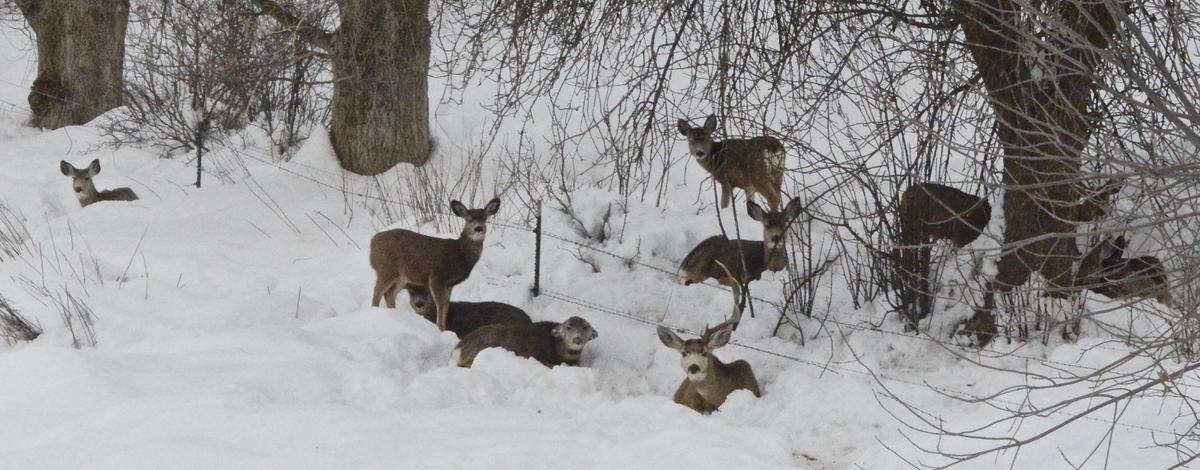When big snowstorms roll through Idaho, people often wonder if Idaho Fish and Game will start feeding deer, elk, pronghorn and other animals. The short answer is that this is a normal winter so far, and the department usually only feeds big game during extreme winter conditions, or when other factors prompt it.
Fish and Game has winter feeding advisory committees in each region of the state except the Panhandle (which has never had a winter feeding program). The regional advisory committees keep a watchful eye on several weather conditions and factors, such as snow depths, whether there’s crust on snow that hinders an animal’s ability to forage and extended periods of sub-zero temperatures. They also monitor if animals are causing damage to private agriculture lands, or creating hazards to public safety, such as congregating near freeways and highways.
If any of these situations start to occur, the committees convene and make recommendations to Fish and Game whether to begin emergency feeding.
Deer, elk, pronghorn and other wildlife are adapted to Idaho’s climate and can withstand most winter weather. When extreme weather threatens massive die offs, Fish and Game has feed stockpiled so department personnel can react.
Even during normal winters, some wildlife mortality is expected, and the department's policy is that big game populations should generally be maintained under natural conditions, and with naturally available forage.
To learn more, see the Big Game Winter Feeding webpage.

